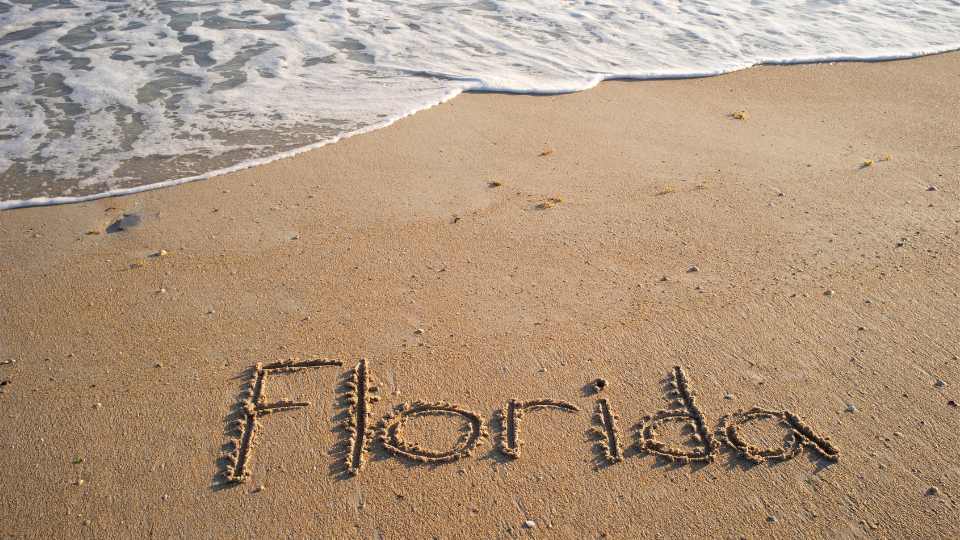
Florida offers a mix of vibrant cities and natural beauty, making it a desirable place to live, yet the cost can be a concern for many. The key to affording life in Florida often lies in understanding and leveraging state-specific advantages and finding affordable locales.
Gainesville, one of the more affordable cities in Florida, is an example of how location affects living costs. This city combines lower housing prices with cultural and natural attractions, such as the University of Florida and the Butterfly Rainforest. This makes Gainesville a more viable option for those looking to balance affordability with quality of life.
Another crucial element is the state’s minimum wage, which is $13 per hour, notably higher than the federal minimum wage of $7.25. This higher wage can help residents manage living expenses more effectively, from housing to healthcare. By identifying affordable cities and taking advantage of Florida’s living wage, residents can better navigate the financial landscape of the state.
Understanding the Economic Landscape of Florida
Florida’s economy is marked by its unique mix of industries, tax policies, and wage structures that shape the financial lives of its residents. Key areas of focus are income and employment opportunities and state and local tax policies.
Income and Employment Opportunities
Florida presents a diverse employment landscape with key sectors including tourism, healthcare, construction, and technology. Tourism is particularly significant, often providing a wealth of low-wage jobs that can be challenging for workers attempting to secure affordable housing.
The state’s minimum wage is currently set at $13.00 per hour. This is markedly lower than the hourly wage of $27.58 considered necessary to afford a typical two-bedroom rental. Income disparities are evident, with average hourly earnings for renters at $16.10, still below the threshold for reasonable housing costs.
Higher-salary jobs do exist in metropolitan areas, driven by finance, real estate, and higher education institutions. However, the gap between low-wage and high-wage employment remains a pressing issue.
State and Local Tax Policies
Florida’s tax policies significantly impact the economic climate. The state has no state income tax, which can attract higher-income individuals and businesses. However, this absence is counterbalanced by relatively high sales taxes and property taxes.
The average sales tax rate, including local surtaxes, is approximately 7.0%. These taxes can disproportionately affect lower-income earners who spend a larger portion of their income on taxable goods and services.
Property taxes vary by county, but they also constitute a significant source of state revenue. They can be burdensome for homeowners, with rates differing based on local government policies and property values.
The overall effect of these tax structures presents both opportunities and challenges for residents, influencing decisions around employment and housing.

Housing and Cost of Living
Affording to live in Florida involves carefully navigating various aspects of housing, from rent versus home ownership to understanding the real estate market and budgeting effectively for household expenses.
Renting Versus Owning
When considering housing in Florida, individuals must decide between renting and owning. Rent prices vary significantly across cities, with the state seeing higher rent costs than the national average. For example, the average rent for a one-bedroom apartment in Ocala is approximately $1,200 monthly.
Owning a home in Florida comes with different costs. The median home price in cities like Ocala is around $285,000. Prospective homeowners must weigh these costs against current rental prices to determine which is a financially viable option.
Housing Market Trends and Prices
Real estate trends show an ever-evolving housing market in Florida. As of July 2024, the median single-family home price was approximately $416,990, reflecting a competitive market. Some areas, like Gainesville and Ocala, offer more affordable alternatives.
These trends also indicate that prices can fluctuate, influenced by factors like proximity to major metros and economic conditions. Examining different cities and their specific housing trends is crucial for anyone looking to buy property in Florida.
Budgeting for Household Expenses
Effective budgeting is essential to afford living in Florida. Household income levels, such as the median of $46,841 in Ocala, play a significant role in determining what part of income should be allocated toward housing. Utilizing a cost of living calculator helps organize expenses, considering factors like utilities, food, healthcare, and transportation.
Budget planning includes evaluating mortgage payments for homeowners or rent for tenants. Additionally, understanding disparities in per capita income, such as $19.50 for white individuals against $10.56 for Black individuals, is important for realistic budgeting strategies.
By analyzing these elements comprehensively, one can better prepare financially to live comfortably in various cities across Florida.
Transportation and Daily Living Expenses
Florida’s transportation and daily living expenses vary depending on location, lifestyle, and access to public services. Understanding these costs is critical for those planning to move to or within the state.
Managing Transportation Costs
Transportation in Florida often means reliance on personal vehicles rather than public transportation. Public transit options like buses and trains are limited, and many prefer driving.
A commuter in Miami might pay $145 monthly for public transit. Jacksonville offers a 31-day STAR card for $50. Higher fuel costs and tolls can add significantly to monthly budgets. Residents should budget for car maintenance, insurance, and parking fees, particularly in urban areas.
Healthcare and Insurance Coverage
Healthcare expenses in Florida can be a significant part of one’s budget. Insurance costs depend on plans and coverage. Florida has a higher-than-average rate of uninsured residents.
Those with employer-provided insurance typically fare better. Medicaid is available for eligible low-income residents. Private insurance plans on the ACA Marketplace help offset medical expenses, though premiums may be high.
Groceries and Personal Care
The cost of groceries in Florida can vary widely by region and shopping habits. Larger cities may have higher prices for food and personal care items.
Local farmers’ markets and discount grocery chains like Aldi and Walmart offer more affordable options. Residents should strategize their shopping by using coupons, buying in bulk, and choosing local produce to save money. Personal care costs, including toiletries and household items, should be managed through careful product selection and timing purchases with sales.

Lifestyle and Recreation in Florida
Florida’s diverse options for leisure and cultural activities make it a magnet for both residents and visitors. Known for vibrant cities like Miami and Orlando, the state is home to rich arts, entertainment venues, and extensive outdoor activities.
Cultural and Entertainment Offerings
Florida boasts a plethora of cultural attractions. Miami is famous for its thriving arts scene, with institutions such as the Perez Art Museum and the Wynwood Walls showcasing contemporary art. Orlando, often associated with its theme parks, also has a budding arts district.
The state is a hub for media and entertainment. Miami hosts the annual Miami Film Festival, drawing international attention. Meanwhile, Orlando is home to several performing arts centers, offering a range of concerts, theater performances, and dance shows.
Community Events and Education
Community events are abundant throughout the Sunshine State. Cities like Orlando and Miami regularly host food festivals, street markets, and music events that foster a sense of community. Educational opportunities are also plentiful, thanks to institutions like the University of Florida and Florida State University.
Public libraries offer various programs for all ages, from book clubs to educational workshops. Many communities also offer lifelong learning courses, ensuring residents have access to continuous education and skill development opportunities.
Outdoor Activities and Beaches
Outdoor enthusiasts will find endless options in Florida. The state is known for its beautiful beaches, such as those in Key West and Clearwater, attracting sunbathers and water sports enthusiasts alike. Activities range from snorkeling and scuba diving to deep-sea fishing.
Numerous state parks offer hiking, bird watching, and camping. The Everglades National Park, for instance, provides unique opportunities for airboat tours and wildlife spotting. Florida’s pleasant climate makes it possible to enjoy outdoor activities year-round, enhancing the quality of life for its residents.
Navigating Challenges and Opportunities
Living in Florida presents unique challenges and opportunities. Understanding the impact of developing cities and implementing strategies for affordable living are crucial for residents.
The Impact of Developing Cities
Florida’s cities are rapidly expanding, attracting new residents and businesses. Miami and Tampa offer vibrant lifestyles but come with higher living costs.
Urban development has led to increased housing demand, often outpacing supply. Property values and rent can surge, which presents a challenge for affordable housing.
Developers are focusing on creating sustainable communities, incorporating green spaces and enhancing public services. While this development boosts local economies, it can also lead to unaffordable housing for low-income residents. Partnerships between local governments and private firms are pivotal in maintaining a balance between growth and affordability.
Strategies for Affordable Living
Adopting a budget-conscious lifestyle is essential. Potential residents should research local cost of living and seek communities with lower expenses.
Renters may benefit from housing assistance programs. The National Low Income Housing Coalition provides resources for those in need. Additionally, shared housing and co-living spaces can reduce personal expenses.
Buying a home might be more achievable in smaller or developing cities. Remote work opportunities can also provide flexibility in choosing more affordable living areas without sacrificing income.
Community support programs, such as local food banks and energy assistance, can also help mitigate living expenses. Smaller, emerging cities might offer a balance between development and affordability, making them attractive options.
